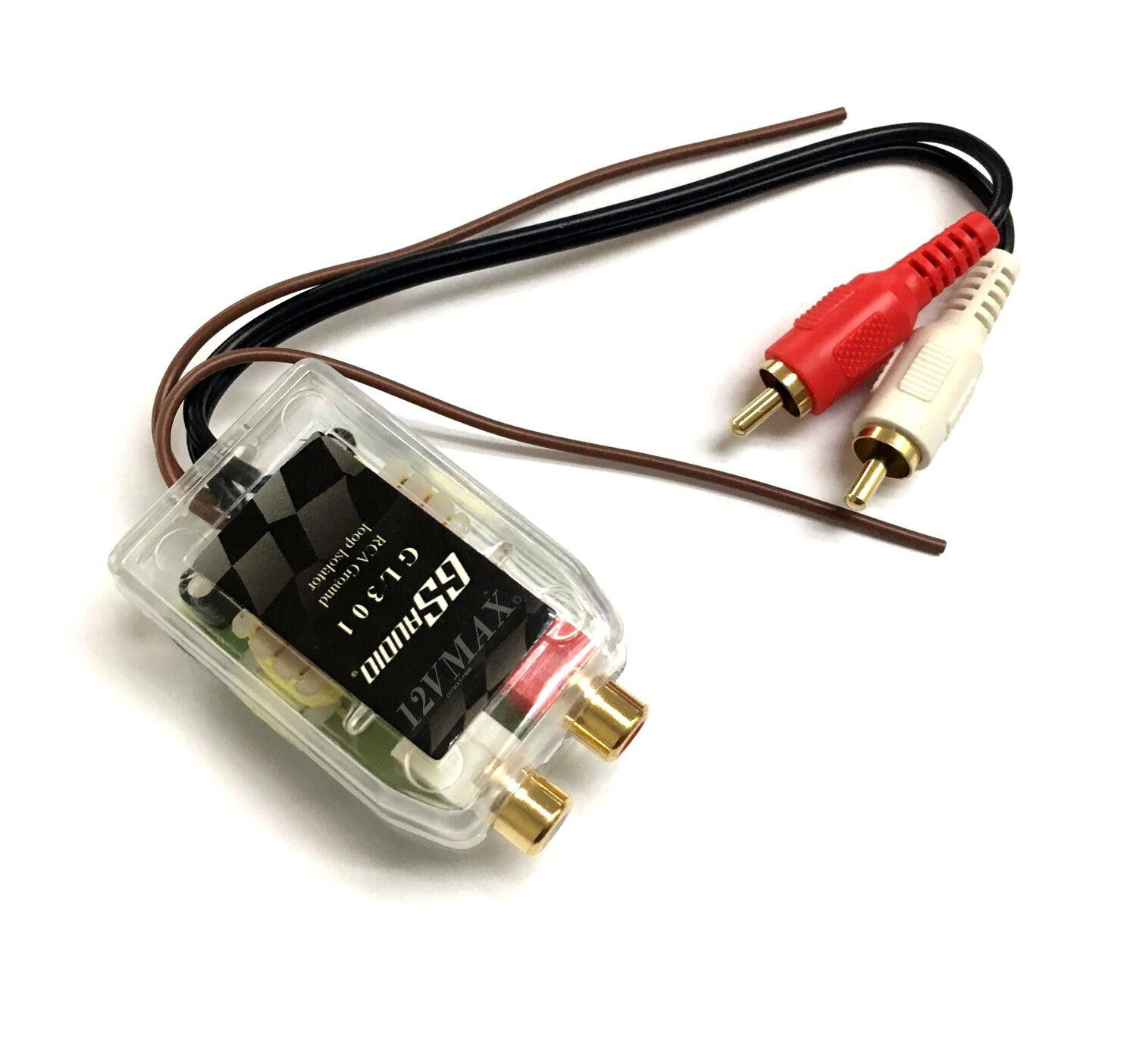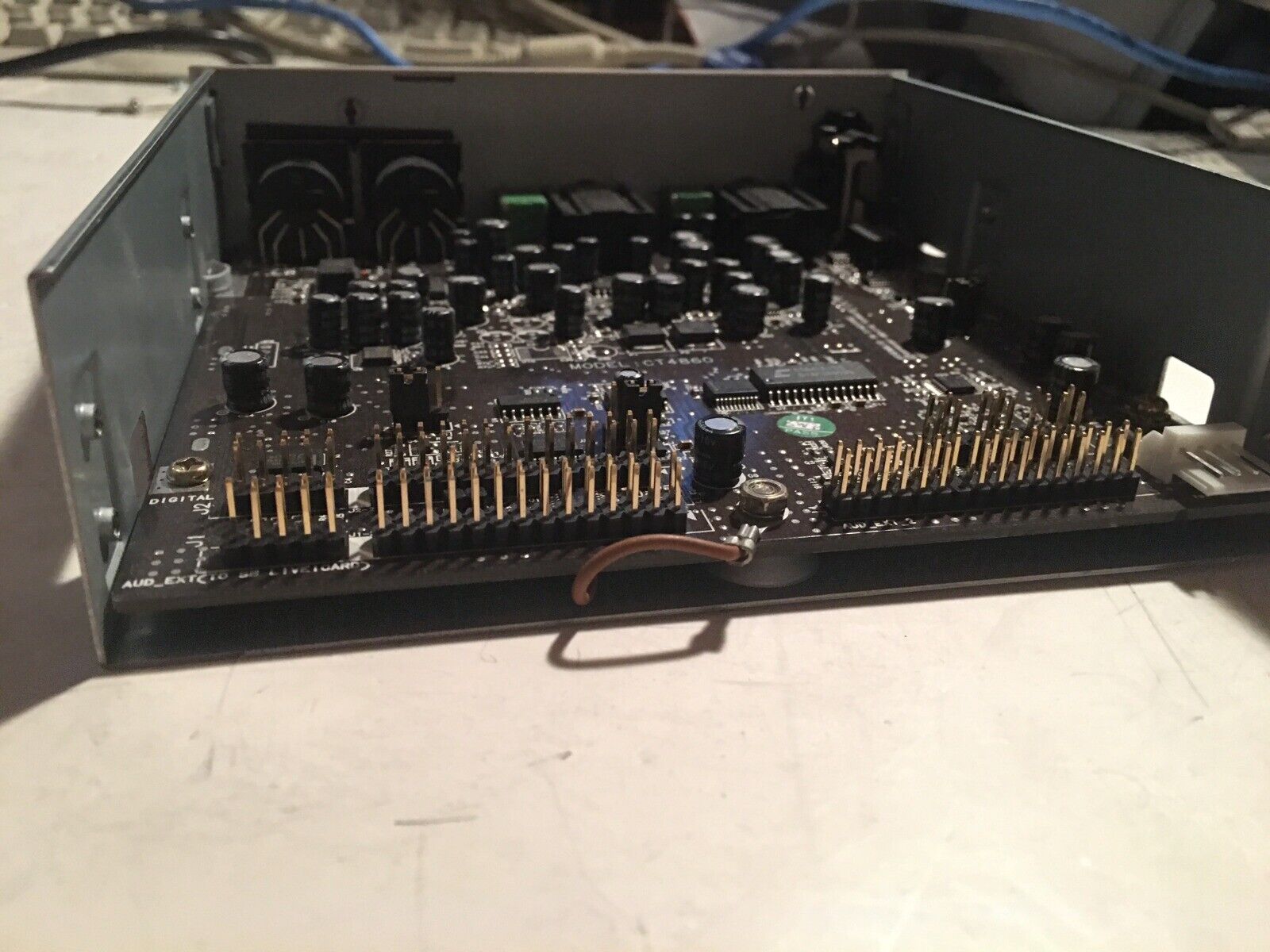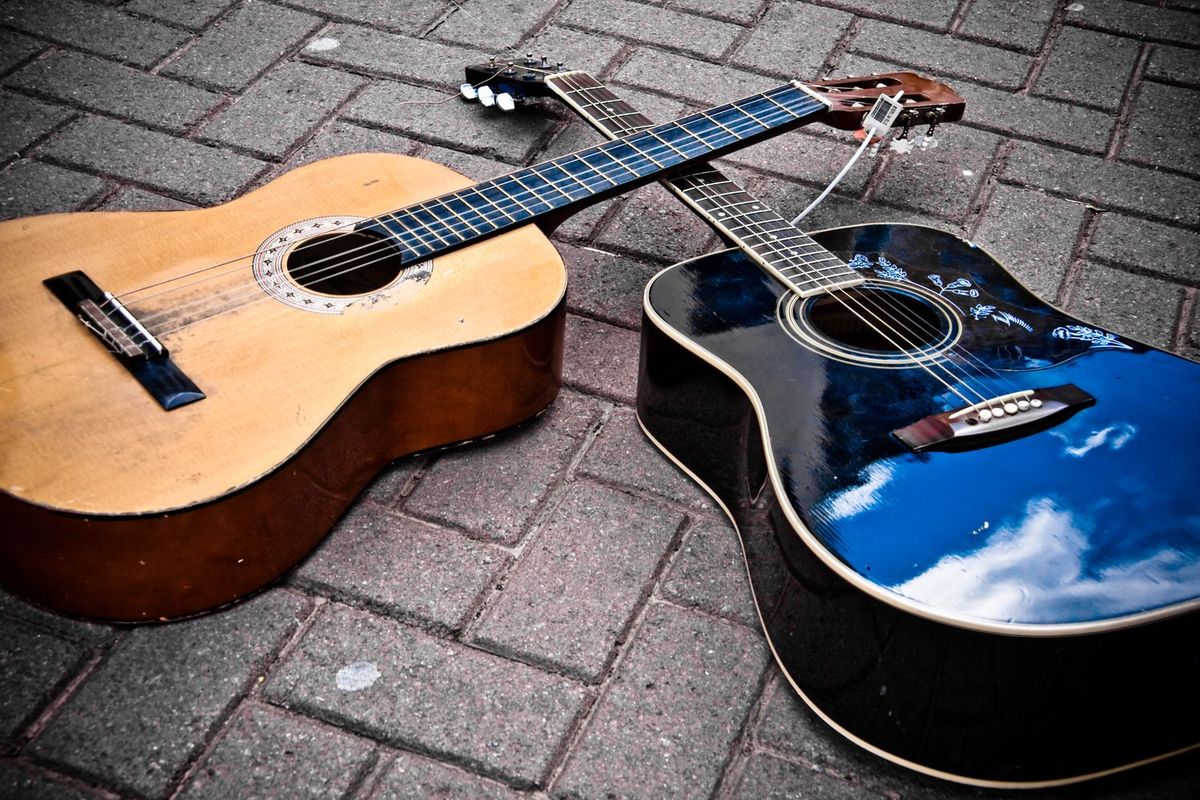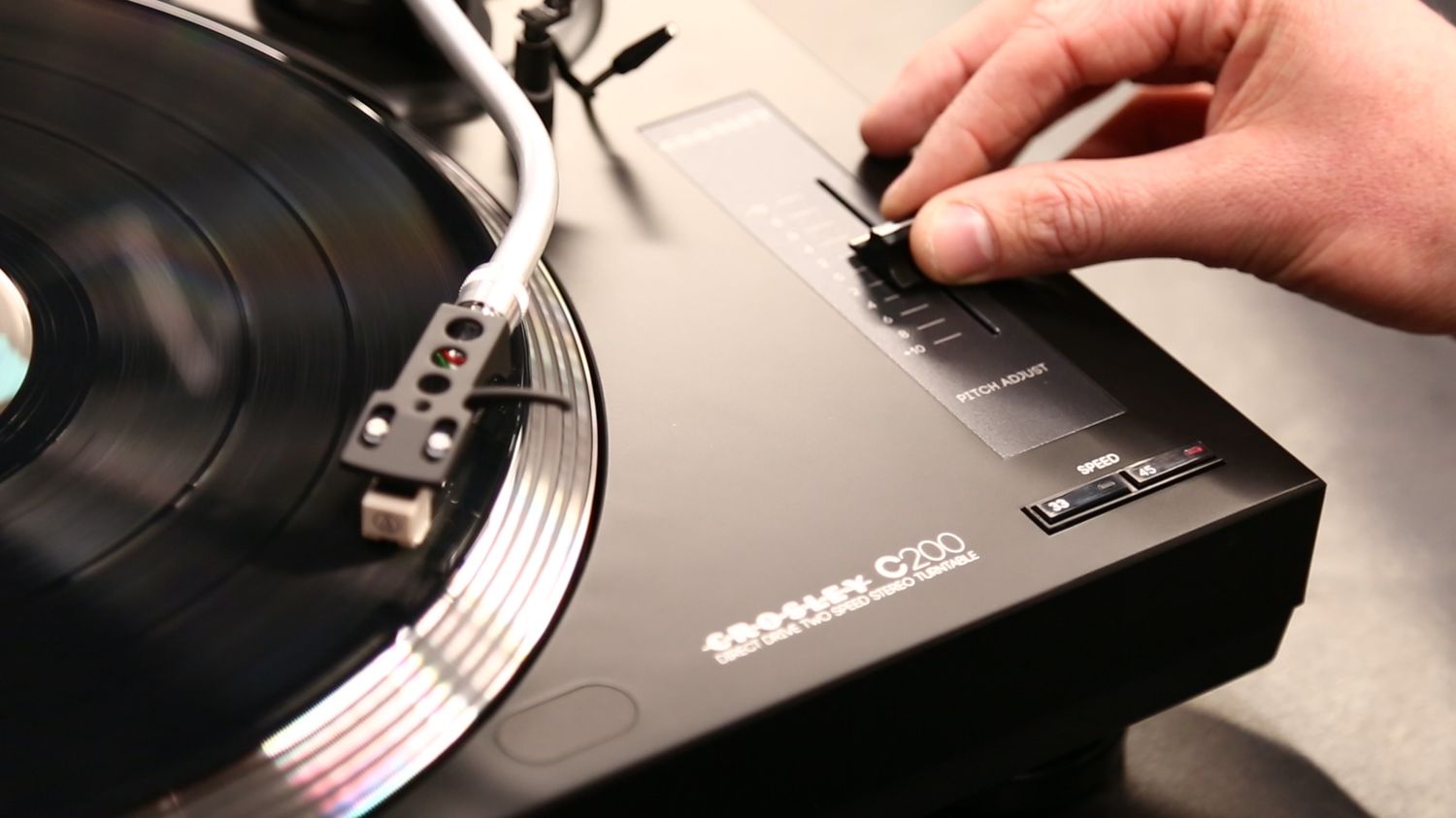Home>Devices & Equipment>Turntable>What Do You Ground Your Turntable To?
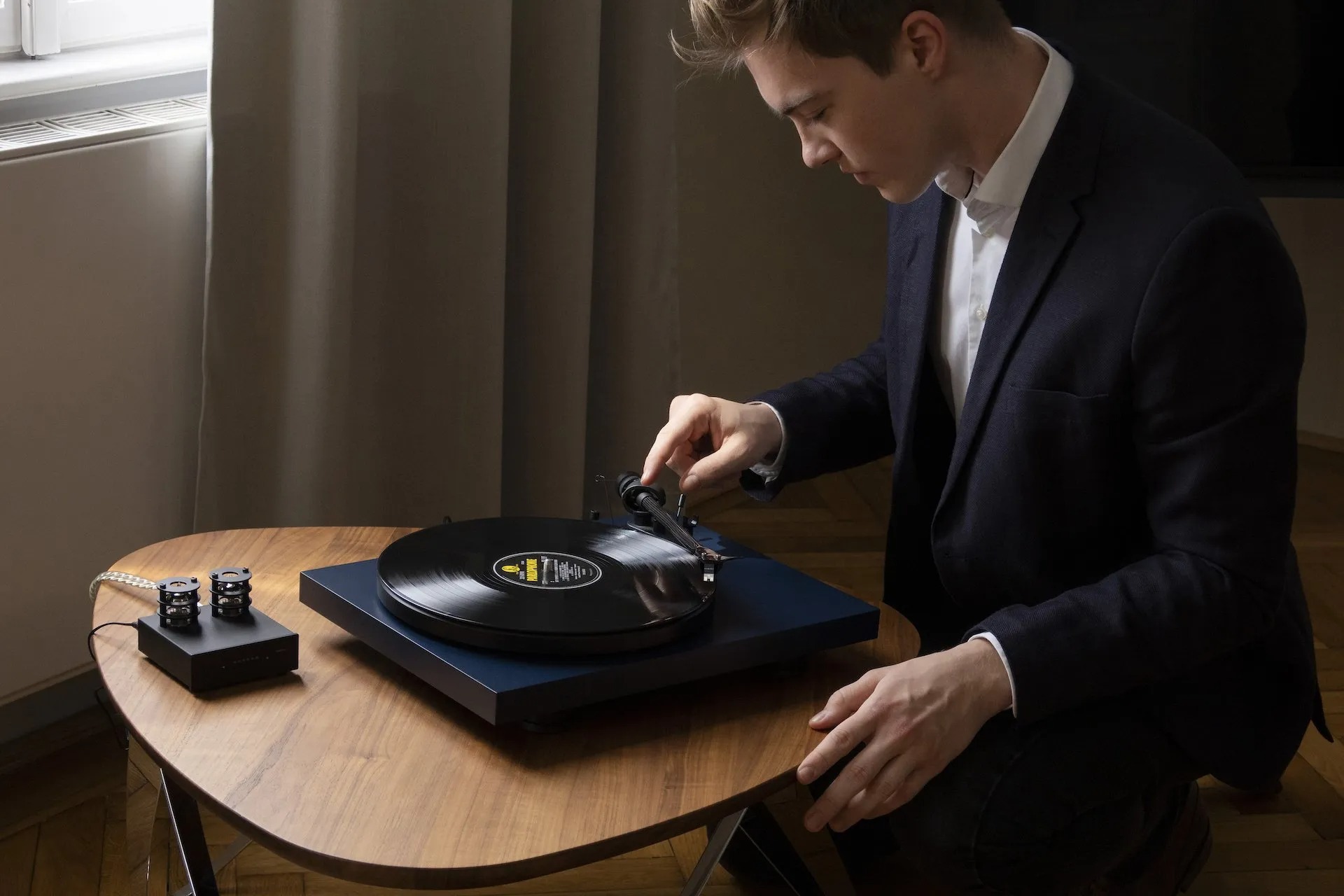

Turntable
What Do You Ground Your Turntable To?
Modified: January 22, 2024
Discover the importance of grounding your turntable and find out the best methods for achieving optimal sound quality. Upgrade your audio experience today with expert advice on turntable grounding!
(Many of the links in this article redirect to a specific reviewed product. Your purchase of these products through affiliate links helps to generate commission for AudioLover.com, at no extra cost. Learn more)
Table of Contents
Introduction
Turntables are an integral part of the vinyl listening experience. They allow us to enjoy the warm, rich sound that vinyl records are known for. But to truly optimize the performance of your turntable, one important aspect to consider is grounding.
Grounding refers to the process of connecting your turntable to a common ground reference, typically the ground terminal of your audio equipment. This connection serves to eliminate any unwanted electrical interference, ensuring a clean and pure signal for playback.
Proper grounding is crucial for achieving optimal sound quality and minimizing any potential issues such as hum, buzzing, or distortion. It helps to reduce the build-up of static electricity and eliminates any potential ground loops that may occur when various audio components are interconnected.
In this article, we will explore the importance of grounding turntables and the various methods available to achieve it. By understanding the grounding process, you can ensure that your turntable delivers the best possible audio performance and an immersive vinyl listening experience.
Importance of Grounding Turntables
Grounding is essential for turntables because it helps to eliminate unwanted noise and interference, ensuring a cleaner and more accurate audio signal. Here are a few reasons why grounding your turntable is important:
- Noise Reduction: Grounding helps to reduce electrical noise, hum, and interference that can be picked up by the turntable during playback. This interference can degrade the audio quality and result in unwanted background noise or distortion. Proper grounding ensures a clean and clear sound reproduction.
- Elimination of Ground Loops: Ground loops occur when there are multiple grounding paths between audio components. This can lead to a low-frequency hum or buzzing sound. Grounding the turntable to a common ground reference helps to eliminate ground loops and minimize these unwanted noise issues.
- Static Electricity Protection: Vinyl records and turntables are susceptible to static electricity buildup, which can cause pops, crackles, and other distortions in the audio playback. Grounding the turntable helps to dissipate static energy, reducing the risk of these unwanted audio artifacts.
- Protection for the Equipment: In addition to improving sound quality, grounding also helps to protect both the turntable and other audio equipment from potential damage due to electrical surges or static discharges. By creating a reliable path for excess electrical energy to safely dissipate, grounding safeguards your equipment.
It is important to note that each turntable may have different grounding requirements. Some turntables have built-in grounding wires or terminals, while others may require external grounding connections.
Next, we will explore some of the common methods used to ground turntables and discuss their advantages and limitations.
Common Grounding Methods
There are several methods available to ground turntables, each with its own set of advantages and limitations. Let’s explore some of the most common grounding methods:
- Grounding to the Phono Preamp: Many turntables have a dedicated grounding terminal that can be connected to the grounding terminal on the phono preamp. This method ensures a direct grounding connection between the turntable and the preamp, reducing the risk of electrical interference. It is a straightforward and effective method, especially when both the turntable and the preamp are from the same manufacturer and designed to work together.
- Grounding to the Receiver or Amplifier: Another common method is to ground the turntable directly to the grounding terminal on the receiver or amplifier. This can be done using a separate grounding wire or by utilizing a built-in grounding post or screw on the audio equipment. This method provides a solid grounding connection and is suitable for setups where the turntable and the receiver/amplifier are in close proximity.
- Grounding to a Dedicated Ground Box: Some audio enthusiasts prefer to use a dedicated ground box for grounding their turntables. A ground box is a separate enclosure specifically designed to consolidate and minimize ground-related issues. It provides a centralized and isolated ground point, reducing the chances of ground loop interference. This method can offer improved audio performance and is particularly useful in complex audio setups.
- Grounding to a Separate Ground Wire: In situations where the turntable and audio equipment are not located in the same vicinity, grounding can be achieved by running a separate ground wire between the turntable and the receiver or amplifier. This helps to establish a direct electrical connection, bypassing any potential ground loops or interference caused by long cable runs.
- Grounding to a Grounding Mat: Some turntables come with grounding mats that can be placed on top of the turntable plinth. These mats are connected to the grounding terminal on the turntable, providing a direct grounding path. The mat helps to dissipate static electricity and reduce noise caused by unwanted electrical interference. This method is simple and effective, especially for turntables that do not have external grounding terminals.
It is important to choose the grounding method that best suits your specific setup and equipment. Experimenting with different grounding techniques can help you find the optimal solution for achieving the cleanest and most accurate audio reproduction.
In the next sections, we will delve deeper into each grounding method, discussing their advantages and any additional considerations to keep in mind.
Grounding to the Phono Preamp
One common method for grounding a turntable is to connect it directly to the phono preamp. Many turntables have a dedicated grounding terminal that can be used for this purpose. Here’s a closer look at grounding your turntable to the phono preamp:
Advantages:
- Direct Connection: Grounding the turntable to the phono preamp ensures a direct and secure grounding connection. This helps to minimize the risk of unwanted interference and ground loops, resulting in cleaner audio playback.
- Compatible with Same Brand Equipment: This method is particularly effective when using a turntable and phono preamp from the same manufacturer. The grounding terminal is designed to work seamlessly with the preamp, ensuring optimal performance.
- Easy to Implement: Connecting the turntable to the phono preamp via the grounding terminal is a straightforward process. It requires minimal additional equipment and can be done by simply attaching a grounding wire between the two terminals.
Considerations:
- Different Grounding Locations: Depending on your specific turntable and phono preamp, the grounding terminals may be located in different places. It is crucial to consult the user manuals or manufacturer’s instructions to locate the appropriate terminals and ensure a proper connection.
- Compatibility: While grounding to the phono preamp is generally effective, it is important to verify compatibility between the turntable and preamp. Ensure that the turntable is designed to be grounded in this manner and that the preamp provides a suitable grounding terminal.
- Length of Grounding Wire: When connecting the turntable to the phono preamp, consider the length of the grounding wire. It is advisable to keep the wire as short as possible to minimize the risk of signal degradation and interference.
- Quality of Grounding Wire: To ensure optimal grounding, use a high-quality grounding wire. This helps to maintain a reliable and low-resistance connection between the turntable and preamp.
Grounding your turntable to the phono preamp is an effective method for reducing noise and interference, particularly when both components are from the same brand. It provides a direct grounding connection, keeping unwanted electrical signals at bay and enhancing the overall audio performance of your turntable setup.
Next, we will explore another common grounding method: grounding the turntable to the receiver or amplifier.
Grounding to the Receiver or Amplifier
Grounding your turntable to the receiver or amplifier is another common method that can help minimize unwanted noise and interference. Here’s what you need to know about this grounding method:
Advantages:
- Simplicity: Grounding the turntable to the receiver or amplifier is a straightforward process, especially if your audio equipment has a designated grounding terminal. It eliminates the need for additional grounding devices or wires, making it a convenient option.
- Direct Connection: By grounding the turntable directly to the receiver or amplifier, you establish a direct ground path. This helps reduce the chances of ground loops and minimize electrical interference, resulting in cleaner audio playback.
- Suitable for Close Proximity Setups: This method is ideal if your turntable and receiver or amplifier are located near each other. The shorter distance between the components ensures a reliable grounding connection without the need for long grounding wires.
Considerations:
- Grounding Terminal Availability: Not all receivers or amplifiers have a dedicated grounding terminal. In such cases, you may need to look for alternative grounding methods specific to your audio equipment.
- Compatibility: Ensure that the grounding method you choose is compatible with your turntable and receiver/amplifier. Some turntables may require specific grounding configurations, so consult the user manuals or manufacturer’s instructions for proper guidance.
- Wire Quality and Connection: Use a high-quality grounding wire to establish a reliable connection between the turntable and the receiver or amplifier. A secure and low-resistance connection is essential for effective grounding.
- Electrical Safety: Exercise caution when working with electrical connections. Ensure that all components and wires are properly insulated and that the equipment is unplugged before making any grounding connections.
Grounding your turntable to the receiver or amplifier helps create a direct ground path, reducing the risk of electrical interference and improving audio performance. It is a simple and effective method, especially for setups where the turntable and audio equipment are located in close proximity.
In the next section, we will explore grounding your turntable to a dedicated ground box.
Grounding to a Dedicated Ground Box
Grounding your turntable to a dedicated ground box is a popular method among audio enthusiasts to achieve optimal grounding. Here’s a closer look at this grounding method:
Advantages:
- Centralized Grounding: A dedicated ground box provides a centralized and isolated grounding point for your turntable. It consolidates all ground connections from various audio components, reducing the chances of ground loops and minimizing potential electrical interference.
- Improved Audio Performance: By utilizing a dedicated ground box, you can achieve cleaner and more accurate audio reproduction. This method helps to maintain a low noise floor and enhances the overall fidelity of your sound system.
- Flexible Setup: Ground boxes offer flexibility in terms of placement and connectivity. You can position the ground box in an optimal location, away from potential sources of electrical interference. Additionally, they usually have multiple grounding terminals, allowing you to connect multiple audio components with ease.
Considerations:
- Ground Box Quality: Choosing a high-quality ground box is essential to ensure reliable grounding. Look for a well-built and properly shielded ground box that offers good isolation from electrical noise.
- Ground Box Size: Consider the size and capacity of the ground box. Ensure that it can accommodate all the necessary grounding connections for your turntable and other audio equipment.
- Proper Wiring: Pay attention to the wiring and connections within the ground box. Use high-quality cables and ensure that the grounding connections are securely and effectively made.
- Additional Investments: Implementing a dedicated ground box may require additional investments in terms of purchasing the box itself and any necessary cables or connectors. However, for enthusiasts seeking the highest level of audio performance, the investment can be worthwhile.
Grounding your turntable to a dedicated ground box provides a centralized and effective solution for achieving optimal grounding and reducing electrical interference. It offers improved audio performance and flexibility in setting up your turntable and audio system.
In the next section, we will discuss grounding your turntable using a separate ground wire.
Grounding to a Separate Ground Wire
Grounding your turntable using a separate ground wire is a method commonly used when the turntable and the receiver or amplifier are not located in close proximity. This method provides a direct electrical connection and helps minimize unwanted noise and interference. Here’s what you need to know:
Advantages:
- Direct Electrical Connection: Using a separate ground wire allows you to establish a direct electrical connection between the turntable and the receiver or amplifier, bypassing any potential ground loop issues. This helps to ensure a clean and clear audio signal.
- Flexibility in Setup: Since the turntable and the receiver or amplifier are not required to be close together, you have greater flexibility in positioning your equipment. This can be beneficial for those with larger listening areas or unique room layouts.
- Reduced Interference: This grounding method helps minimize interference and noise that can be introduced when using long interconnect cables. By grounding the turntable directly to the receiver or amplifier, you can reduce the risk of signal degradation and optimize audio performance.
Considerations:
- Proper Ground Wire: Use a dedicated grounding wire that is specifically designed for audio applications. It should have good conductivity and insulation properties to ensure a reliable and effective grounding connection.
- Wire Routing: Pay attention to the routing of the ground wire. Keep it away from power cables or other potential sources of electrical interference to prevent unwanted noise or signal degradation.
- Length of the Ground Wire: When using a separate ground wire, keep its length as short as possible to minimize resistance and unwanted capacitance. A shorter wire helps maintain a more direct and efficient grounding connection.
- Secure Connections: Ensure that all connections, including the grounding wire to both the turntable and the receiver or amplifier, are securely fastened. Loose or unreliable connections can lead to poor grounding and introduce additional noise issues.
Grounding your turntable to a separate ground wire is a practical solution when dealing with longer distances between the turntable and the receiver or amplifier. It allows you to establish a direct electrical connection, minimizing the risk of interference and enhancing the overall audio quality.
In the next section, we will explore grounding your turntable to a grounding mat.
Grounding to a Grounding Mat
Grounding your turntable to a grounding mat is a unique and effective method for reducing noise and interference. The grounding mat provides a direct connection to the turntable, helping to dissipate static electricity and minimize unwanted electrical signals. Here’s what you should know about grounding your turntable to a grounding mat:
Advantages:
- Static Electricity Dissipation: Vinyl records and turntables are prone to static electricity buildup, which can cause pops, crackles, and other audio distortions. A grounding mat provides a dedicated path for static electricity to dissipate, helping to reduce these unwanted artifacts and maintain clearer audio playback.
- Electrical Interference Reduction: By connecting the turntable to a grounding mat, you create a direct grounding path that helps minimize electrical interference. The mat acts as a shield, dissipating any unwanted electrical signals and reducing noise in the audio playback.
- Easy to Use: Grounding mats are typically designed to be placed on top of the turntable plinth. They often come with a grounding wire that can be connected to the turntable’s grounding terminal. This makes it a user-friendly option that can be easily implemented.
Considerations:
- Quality of the Grounding Mat: It is important to select a high-quality grounding mat that offers good conductivity and effective static discharge capabilities. Look for mats specifically designed for turntable grounding to ensure optimal performance.
- Proper Placement of the Mat: The grounding mat should be placed on top of the turntable’s plinth, making sure it is in direct contact with the turntable chassis. This ensures a proper grounding connection and effective dispersion of static electricity.
- Connecting the Grounding Wire: Use the provided grounding wire to establish a secure connection between the grounding mat and the turntable’s grounding terminal. Ensure that the connection is tight and reliable for proper grounding.
- Compatibility: Not all turntables have built-in grounding terminals or provisions for grounding mats. Verify whether your turntable is compatible with this grounding method before utilizing a grounding mat.
Grounding your turntable to a grounding mat offers an effective way to dissipate static electricity and reduce electrical interference. It is a convenient option that can improve the overall audio quality and enhance your vinyl listening experience.
In the next section, we will conclude our discussion on grounding turntables and summarize the key points.
Conclusion
Grounding your turntable is an essential aspect of optimizing its performance and achieving the best possible audio playback. By establishing a solid grounding connection, you can minimize unwanted noise, interference, and ground loops, resulting in a cleaner and more accurate sound reproduction.
In this article, we explored the importance of grounding turntables and discussed various grounding methods. Grounding to the phono preamp provides a direct connection and is convenient, especially when using same-brand equipment. Grounding to the receiver or amplifier is simple and effective for setups in close proximity. Grounding to a dedicated ground box centralizes and isolates the grounding point, minimizing interference. Grounding using a separate ground wire allows for flexibility in setup, particularly over longer distances. Grounding to a grounding mat helps dissipate static electricity and reduces electrical interference.
When considering a grounding method, it is important to consider factors such as equipment compatibility, wire quality, length of wires, and proper connections. Experimenting with different grounding techniques can help you find the optimal solution for your specific setup.
Remember, proper grounding is not only critical for achieving better sound quality, but it also helps protect your audio equipment from electrical surges and static discharges.
By implementing the appropriate grounding method for your turntable, you can ensure a more immersive and enjoyable vinyl listening experience. Happy spinning!

